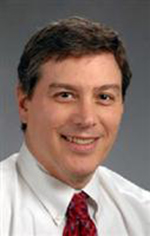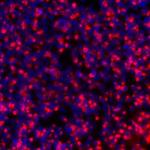
Joseph A. Frank, M.D.
Senior Investigator
Laboratory of Diagnostic Radiology Research
NIH Clinical Center
Research Topics
Dr. Joseph A. Frank is an internationally known clinician scientist in the area of MRI, molecular and cellular imaging and cellular therapy. He has a longstanding clinical research focus of using MRI and Magnetic Resonance Spectroscopic Imaging as outcome measures to monitor the natural history, and using imaging metrics as outcome measures in central nervous system disease treatment trials, establishing imaging approaches as a possible surrogate marker for the new therapies. The Frank Laboratory's present major translation research interest is in the area of development of cellular and molecular imaging for use in cell and gene therapy and developing noninvasive techniques to improve cell homing and targeting to pathology. The Frank Laboratory pioneered techniques using FDA-approved superparamagnetic iron oxide nanoparticles complexed to transfection agents to magnetically label cells for cellular MRI. This method of magnetic cellular labeling is not toxic to cells and has resulted in MR imaging being used to monitor the temporal spatial migration of labeled cells as part of cellular therapy. An FDA superparamagnetic iron oxide nanoparticle complexed to transfection agents is presently being used to label genetically engineered stem cells in early phase clinical trials for treatment of patients with recurrent glioma. Plans are underway to label hematopoietic or bone marrow stromal stem cells or immune cells in patients with malignancy, ischemic or autoimmune diseases. The laboratory's translational research is also in developing techniques using high-intensity focused ultrasound to enhance homing permeability and retention of stem cells to targeted pathology. Pulsed Focused Ultrasound is a noninvasive nondestructive technique that, when coupled with cellular therapies, can be used to increase numbers of cells to targeted areas as part of regenerative medicine approach to treatment of disease. His laboratory has reported that pulse focused ultrasound induces the up-regulation and expression of chemo-attractant cytokines, growth factors and cell adhesion molecules on endothelial cells, resulting in the active homing and transmargination of stem cells from the vasculature into the targeted parenchyma. The molecular changes from pulsed focused ultrasound are due to the nonthermal acoustic radiation forces through mechanotransduction. The laboratory is actively examining the interactions of ultrasound with cellular and molecular mechanisms within normal and diseased tissues. The ability to actively home stem cells or genetically engineered cells outside or after the acute injury or inflammatory period provides additional flexibility of cell dosing and timing of cellular therapy.
Biography
Dr. Frank earned his medical degree at the State University of New York (SUNY) at Stony Brook in 1981 and trained in internal medicine at the University Hospital, Boston University Medical Center from 1981-1984. He was trained in the National Cancer Institute Medical Oncology fellowship program at NIH from 1984-85 and is board certified in internal medicine and medical oncology. Between 1985-1992 he was the Director of MRI Research in the Diagnostic Radiology Department of the NIH Clinical Center. He became a tenured senior investigator in the Clinical Center in 1989. In 1992 he moved to the Office of Intramural Research, Office of the Director, NIH, to take a position as Chief of the Laboratory of Diagnostic Radiology Research (LDRR), a congressionally- mandated program. He is now Chief of the Frank Laboratory and the Laboratory of Diagnostic Radiology Research in the Radiology and Imaging Sciences Department at the NIH Clinical Center. He is also an adjunct senior investigator in the Intramural Research Program, National Institutes of Biomedical Imaging and Bioengineering, and Director of the Imaging Sciences Training Program that is jointly sponsored with the NIH Clinical Center.
Selected Publications
- Kovacs ZI, Kim S, Jikaria N, Qureshi F, Milo B, Lewis BK, Bresler M, Burks SR, Frank JA. Disrupting the blood-brain barrier by focused ultrasound induces sterile inflammation. Proc Natl Acad Sci U S A. 2017;114(1):E75-E84.
- Rosenblatt RB, Frank JA, Burks SR. Cytosolic Ca2+ transients during pulsed focused ultrasound generate reactive oxygen species and cause DNA damage in tumor cells. Theranostics. 2021;11(2):602-613.
- Mastorakos P, Mihelson N, Luby M, Burks SR, Johnson K, Hsia AW, Witko J, Frank JA, Latour L, McGavern DB. Temporally distinct myeloid cell responses mediate damage and repair after cerebrovascular injury. Nat Neurosci. 2021;24(2):245-258.
- Burks SR, Kersch CN, Witko JA, Pagel MA, Sundby M, Muldoon LL, Neuwelt EA, Frank JA. Blood-brain barrier opening by intracarotid artery hyperosmolar mannitol induces sterile inflammatory and innate immune responses. Proc Natl Acad Sci U S A. 2021;118(18).
- Cohen G, Chandran P, Lorsung RM, Tomlinson LE, Sundby M, Burks SR, Frank JA. The Impact of Focused Ultrasound in Two Tumor Models: Temporal Alterations in the Natural History on Tumor Microenvironment and Immune Cell Response. Cancers (Basel). 2020;12(2).
Related Scientific Focus Areas

Biomedical Engineering and Biophysics
View additional Principal Investigators in Biomedical Engineering and Biophysics




This page was last updated on Monday, July 19, 2021